
BY DR. RAVINDER PALL SAINI,
INDIAN FOREST SERVICE ( RETIRED)
MEMBER, BOARD OF MANAGEMENT,
FOREST RESEARCH UNIVERSITY,
DEHRADUN.
DEHRADUN, 22 MAY 2024:
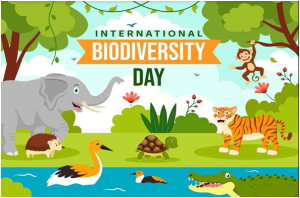
“As we encroach on nature and deplete vital habitats, increasing numbers of species are at risk. That includes humanity and the future we want.’’ ~~~~~~~~~~UN Secretary-General António Guterres.
IMPORTANCE OF THE INTERNATION BIODIVERSITY DAY CELEBRATION:
The International Day for Biological Diversity functions as a worldwide podium to highlight the critical significance of biodiversity in maintaining life on our planet. Biodiversity incorporates an incredible series of plants, animals, and microorganisms, along with the ecosystems they inhabit. It plays a decisive role in transferring essential ecosystem services, including pollination, nutrient recycling, water purification, and climate regulation effectively and efficiently. Additionally, biodiversity holds cultural, aesthetic, and economic value, supporting livelihoods and contributing to sustainable development efforts.

Biodiversity builds on a growing movement toward nature-based solutions, which harness the power of ecosystem services to mitigate effects of the climate crisis. In addition, biological diversity is often understood in terms of the wide variety of plants, animals, and microorganisms.
Globally, around 25% of all animal and plant species are threatened with extinction. This year the International Day for Biological Diversity is targeted towards raising awareness and building momentum on the importance of biodiversity as well as global issues on biodiversity loss, in the lead up to the United Nations Biodiversity Conference.
What is Biodiversity?
Biodiversity is an evaluation of the number, variety, and variability of the living organisms on the Earth. It incorporates the diversity within species, in between the species and among the ecosystems. It also covers the geographic variability of the species over a time span. Biodiversity forms an integral part of human wellness and future survival.
Types of Biodiversity:
There are the following three different types of biodiversity:
Genetic Biodiversity
Species Biodiversity
Ecological Biodiversity
Genetic diversity takes into account the genetic variations present in a species whereas ecosystem diversity refers to types of ecosystems present on earth. Species diversity refers to the species richness.
THEME OF INTERNATIONAL DAY FOR BIOLOGICAL DIVERSITY 2024:
“Be part of the Plan”, the theme of International Day for Biological Diversity (IDB) 2024, is a call to action for all participants to halt and inverse the damage of biodiversity by supporting the enactment of the Kunming-Montreal Global Biodiversity Framework, also referred to as the Biodiversity Plan.
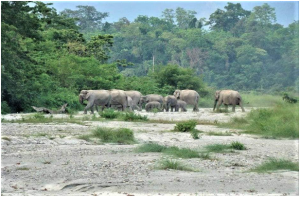
A Biodiversity Action Plan is a means of managing our world’s resources to contribute to the protection and conservation of our biodiversity through developing management plans for various organizations. A Biodiversity Action Plan is basically a management system for any conservation site and can be integrated into the Environmental Management System of the concerned area.
BACKGROUND:
The United Nations declared May 22 as the International Day for Biological Diversity (IDB) to foster understanding and awareness of biodiversity issues. When first initiated by the Second Committee of the UN General Assembly in late 1993, 29 th December (the date of entry into force of the Convention of Biological Diversity), was designated The International Day for Biological Diversity.
As the global community is called to re-examine its relationship to the natural world, one thing is certain: despite all our technological advances we are completely dependent on healthy and vibrant ecosystems for our health, water, food, medicines, clothes, fuel, shelter, and energy, just to name a few. The slogan “Our Solutions Are in Nature” emphasizes hope, solidarity, and the importance of working together at all levels to build a future of life in harmony with nature.
As the global community is called to re-examine our relationship to the natural world, one thing is certain: despite all our technological advances we are completely dependent on healthy and vibrant ecosystems for our water, food, medicines, clothes, fuel, shelter, and energy, just to name a few.
From nature-based solutions to climate, health issues, food and water security, and sustainable livelihoods, biodiversity is the foundation upon which we can build back better. That is the main message from the Convention on Biological Diversity (CBD), a key international instrument for sustainable development.
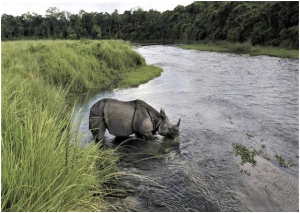
Biodiversity problem correlated with Humanity:
Biological diversity is often understood in terms of the wide variety of plants, animals, and microorganisms, but it also includes genetic differences within each species — for example, between varieties of crops and breeds of livestock — and the variety of ecosystems (lakes, forest, deserts, agricultural landscapes) that host multiple kind of interactions among their members (humans, plants, animals).

Biological diversity resources are the pillars upon which we build civilizations. Fish provide 20 per cent of animal protein to about 3 billion people. Over 80 per cent of the human diet is provided by plants. As many as 80 per cent of people living in rural areas in developing countries rely on traditional plant‐based medicines for basic healthcare.
But loss of biodiversity threatens all, including our health. It has been proven that biodiversity loss could expand zoonoses – diseases transmitted from animals to humans- while, on the other hand, if we keep biodiversity intact, it offers excellent tools to fight against pandemics like those caused by corona viruses.
While there is an expanding perception that biological diversity is a global asset of enormous value to future generations, the number of species is being substantially reduced by selected human activities. Given the importance of public education and awareness about this issue, the UN decided to celebrate the International Day for Biological Diversity annually.
Biodiversity Conservation In India:
India has diverse climatic zones ranging from subtropical, tropical, arctic, and temperate climatic conditions. The various climatic zones have produced diverse ecosystem types varying from the cold deserts (Ladakh), humid tropical (Western ghats), and warm coastline to hot deserts (Rajasthan). The altitudinal gradients along various climatic zones coupled with diversified ecosystems subsidized enormously to the rich biological wealth of the nation with diversified fauna and flora. India is regarded as a mega- biodiverse nation among the 17 mega diversity regions of the world. Despite having only 2.2% of the world’s geographical area, the country represents 12% of the world’s species. Globally, out of the entire figure of 12,44,360 species, India ranked 12th by having a total estimate of 1,50,170 catalogued species. These comprise of 1,01,167 animal species and 49,003 plant and fungal species. The country has a dense web of protected areas including national parks, wildlife sanctuaries, conservation reserves, and community reserves covering a total of 1,71,921 km2 (5.03%) of the total geographical area of the country. (Source: Towards Sustainable Natural Resources.

Shahid Ahmad Dar, Sajad Ahmad Dar & Masarat Nabi)
Actions for building back biodiversity:
As the global community is called to re-examine our association to the natural world, one thing is sure: despite all our technological advances we are totally dependent on healthy and vibrant ecosystems for our water, food, medicines, clothes, fuel, shelter, and energy, just to name a few.
This involves accepting, protecting, and restoring our biological wealth. Undoubtedly, this year is special in terms of biodiversity conservation. We now have a renewed sense of hope with the adoption of the Kunming-Montreal Global Biodiversity Framework, a historic agreement signed in December 2022 that sets goals and concrete measures to stop and reverse the loss of nature by 2050.
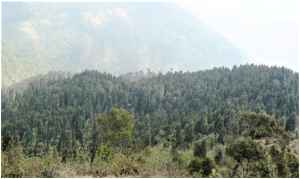
That is why the theme of the International Day for Biological Diversity is from agreement to action: build back biodiversity. The slogan promotes the idea that, now that we have an action plan agreed upon at a global level, we must implement all the measures that the agreement contemplates before 2030. Only in this way will we be able to obtain protected and sustainable biological diversity by 2050. That is the main message from the Convention on Biological Diversity (CBD), the key international instrument for sustainable development. (Source: UN).

Past Themes:
2023 – From Agreement to Action: Build Back Biodiversity.
2022 – Building a shared future for all life
2021 – We’re part of the solution
2020 – Our solutions are in nature
2019 – Our Biodiversity, Our Food, Our Health
2018 – Celebrating 25 Years of Action for Biodiversity
2017 – Biodiversity and Sustainable Tourism
2016 – Mainstreaming Biodiversity; Sustaining People and their Livelihoods
2015 – Biodiversity for Sustainable Development
2014 – Island Biodiversity
2013 – Water and Biodiversity
2012 – Marine Biodiversity
2011 – Forest Biodiversity
2010 – Biodiversity, Development and Poverty Alleviation
2009 – Invasive Alien Species
2008 – Biodiversity and Agriculture
2007 – Biodiversity and Climate Change
2006 – Protect Biodiversity in Drylands
2005 – Biodiversity: Life Insurance for our Changing World
2004 – Biodiversity: Food, Water and Health for All
2003 – Biodiversity and poverty alleviation – challenges for sustainable development
2002 – Dedicated to forest biodiversity
Biodiversity and climate change:
Conserving and restoring natural spaces, and the biodiversity they contain, is essential for restricting emissions and adapting to climate effects. Climate change and biodiversity loss (as well as pollution) are part of a connected triple planetary crisis the world is facing today. They need to be tackled together if we are to advance the Sustainable Development Goals and secure a viable future on this planet.

Advertisement:




















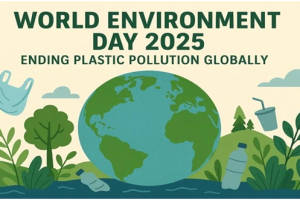








Add Comment